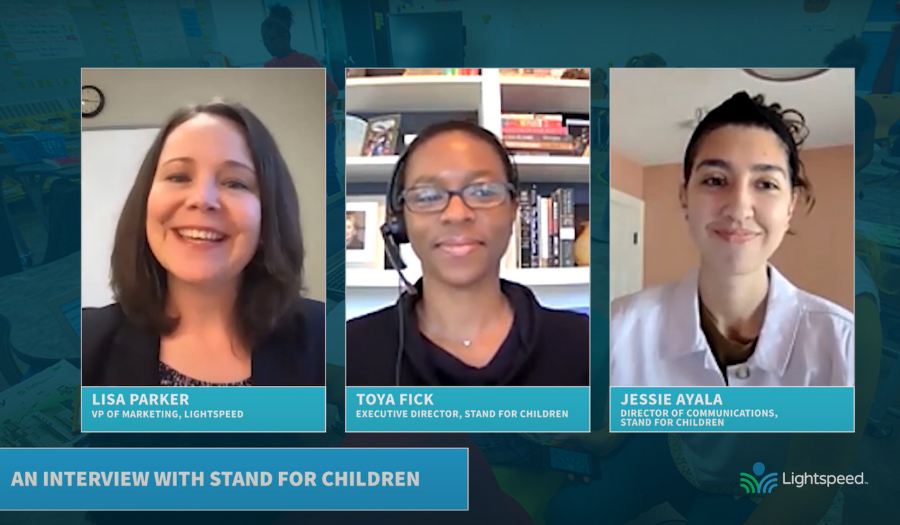Portland Nonprofit Works for Education Equity

Stand for Children, a nonprofit based in Portland, Oregon, has spent the last 25 years working to improve the lives of children through education through proven solutions that focus on equity and racial justice.
The organization followed a Children’s Defense Fund rally in June 1996, drawing some 300,000 participants to Washington, D.C., – largest demonstration for children in U.S. history.
Since 1999, the organization, which operates across nine states, has achieved over 209 state and local victories and leveraged over $6.7 billion in education investments to improve the lives of more than 5.6 million children.
Lightspeed, whose instructional audio systems address classroom equity by ensuring all students can hear clearly, became a Stand partner in 2020.
“We selected Stand for Children because their mission to ensure all children have access to a high-quality education, especially those students that may be underserved or overlooked, aligns very closely with our core values and purpose,” said Lisa Parker, Vice President of Marketing at Lightspeed.
Stand works to identify and implement solutions to overcome barriers to equity in the classroom, both for students and educators.
“We don’t think that good policy comes from a white paper or spreadsheet,” said Toya Fick, Stand’s Oregon executive director. “Good policy comes from having deep impact in the lives of the people that we aim to serve.”
Stand’s work addresses K-12 issues, such as graduation rates, academic achievement, access to Advanced Placement courses, hands-on learning programs, social emotional learning and protecting educator diversity.
Keeping kids on track academically
One program, Center for High School Success, focuses on ensuring ninth-grade students are on track with requirements – a key indicator for graduation. Since it was launched in Oregon in 2017, the program has been implemented in about 400 high schools nationwide, including Washington, Arizona, Colorado, Tennessee and Indiana.
“If they have those credits under their belt, they are twice as likely to graduate, regardless of race or social economic status or English proficiency,” Fick said.
Another legislative effort – the Student Success Act passed in 2019 – provides $1 billion to make sure students of color and low-income students have resources and support to be on reading grade level by the end of third grade, such as extended learning time.
“As a mom of two little kids in Portland Public Schools, I’m a huge fan of the work that districts are doing to extend learning time to focus on things that really matter to get kids to the next level,” Fick said.
Strengthening education partnerships with families
A Stand initiative in Texas works with educators to do home visits to build stronger partnerships and communication with families and support student success.
“Talking to families in their homes makes them more comfortable – particularly families that are overlooked and marginalized,” said Fick, who is a former teacher. “You get a full understanding of what’s happening with the students and it helps you to understand what’s going on as they come into their classroom.”
Improving access to learning
One program piloted in Washington is Academic Acceleration, which automatically enrolls high school students into Advanced Placement based on grades and test scores, rather than a determination by school officials whether a student is college material. The opt-out approach led to a five-fold increase in students of color during the first two years and has been expanded statewide program. A similar program was integrated as part of Oregon’s 2016 Ballot Measure 98, an example of how Stand affiliates work locally, but have broader impact.
“It makes the work deeper and richer and more proven,” she said. “We don’t want silver bullets; we want more of what works.”
A social-emotional learning program called Teach Kindness (WeTeachKindness.org) offers educators free lesson plans for students in grades K-8. The program offers flexible options to fit any kind of class with a lesson that is 15 minutes to 90 minutes.
“It doesn’t have to be a separate class where you teach kindness,” Fick said. “It could be a science teacher pulling off a 15-minute lesson around really listening to your peers and classmates.”
Supporting diversity in the classroom
Stand also supports policies that improve equity for teachers.
“What we’re looking to do is protect educators who bring a wealth of diversity to the students –who help them feel seen and they have the resources and support and tools they need – that those folks aren’t disproportionally laid off,” Fick said.
Broadening support, solutions
Stand works with educators, community-based organizations and networks throughout the country. In the Beaver State, Fick said some of their best ideas come from Oregon Student Voice, a network of students who bring real-time, personal experiences to program work.
Jessie Ayala, Oregon’s Stand marketing and communications director, said student voices are extremely valuable to developing impactful policy work and bringing data to life.
“Someone in a meeting will raise their hand and said, ‘Yeah, that happened to me. That happened to me yesterday,’” Ayala said. “It’s very empowering but also energizing to realize how important it is to continue to look at things on a systemic level while leaving space for these kids to have their very real, individual experiences.”
Looking ahead, Fick said Stand continues to work to ensure that policy reaches classrooms and serves students in a meaningful way. That focus on implementation – as well as legislation – is key to making true impact. While the organization’s focus is on K-12 students, Fick said ultimately, larger issues around poverty and racial justice can’t be ignored.
“There’s a whole system around these children that we need to understand,” she said. “As someone who grew up in poverty, I know that when my mom had one job that supported our family and we had stable housing, my education was even better because I didn’t have to worry about those other things.”
Take action: Learn more about Stand for Children’s programs and access advocacy materials at stand.org.
